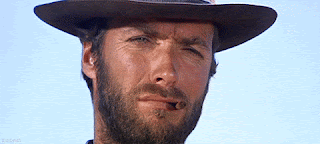The digital age has created a new way for social activists to reach the masses, using computers, mobile phones, and other internet enabled devices, in the battle for social and political change AKA ' Digital Activism'(Sivitanides, M & Shah, V, 2011). With the heroic 'click' of a mouse, anyone can help to cure the world - be it from pollution, hunger, abuse... the list goes on.
Websites like change.org boast 'The world's platform for change' with '54,343,744 people taking action. Victories every day'. Taking advantage of speed, reliability, scale, and low cost of the internet to reach millions of potential supporters, who can easily link to one another, exchange content, coordinate acts, create an effective political movement. (Sivitanides, M & Shah, V, 2011)
Of course there are positive and negative aspects to digital activism. Being inundated with causes creates apathy, as well as engagement (Joyce, 2011). And some say Gen Yer's social consciousness is questionable, labelling them 'slacktivists' who favour social media and creativity to bring issues to light and effect change; instead of more traditional protests, strikes and sit in's (Armchair Advocates, 2013)
Intelligence Group survey, however, found Gen Yer's believe it is on them to make positive change in the world, with 2 out of 3 agreeing "a person on a computer, aware, and spreading the word" can change more than "a person on the street, rallying and protesting", with the most common support "liked a cause on Facebook". (Armchair Advocates, 2013)
It is too simplistic to think that Facebook 'likes' and a viral distribution alone will be effective. Digital activism is highly effective in political, non-violent protesting(DARP, 2013). On the flip side, shut downs (e.g.Egypt) aimed to stop activists using technology only succeed in politicising previously apolitical members of the public (Joyce, 2011)
Using guerilla tactics, 'Culture jamming' uses mass media, marketing tools, hacking, and what Mark Dery describes as 'artistic terrorism' to spread their message. Appropriating Billboard and magazine ads (Adbusters 'Obsession') and using humour, pranks (The 'FedUp' post box, and Greenpeace's projection), irony, and even false press releases(Yes Men- see clip)to get attention and change the world (informationactivism.org, 2013).
The latest campaign from both Greenpeace and fight for the reef uses an effective combination of digital and traditional activism. 'Fight for the Reef' posted a phone number for supporters to call the Great Barrier Reef Marine Authorities directly, asking them to post feedback to the website after their call.
The digital age is a see-saw for activists, and a combination of new and more traditional activist methods is most effective in ensuring change for the better, in a non-violent way. We can be heroes.
References:
 |
The digital age is a see-saw for activists, and a combination of new and more traditional activist methods is most effective in ensuring change for the better, in a non-violent way. We can be heroes.
References:
- Armchair advocates, Intelligence Group, 2013, 'Generation Y: Slacktivists or Socially Conscious?', viewed 13 December 2013, http://armchairadvocates.com/2013/03/01/generation-y-slacktivists-or-socially-conscious/
- Digital Activism Research Project (DARP), 2013, 'About', Accessed 15th December 2013, http://digital-activism.org/about/
- Information Activism, 2013, 'What is culture Jamming? - 10 tactics Remixed', viewed 15th December 2013, https://informationactivism.org/en/what-culture-jamming
- Joyce M, 2011, 'Complex and Contradictory:A New Way to Think of Digital Activism', Accessed 14th December 2013, http://www.meta-activism.org/2011/08/complex-and-contradictory-a-new-way-to-think-of-digital-technologys-effects/
- Sivitanides, M & Shah V, 2011, 'The era of digital activism', viewed 14 December 2013, http://proc.conisar.org/2011/pdf/1842.pdf










